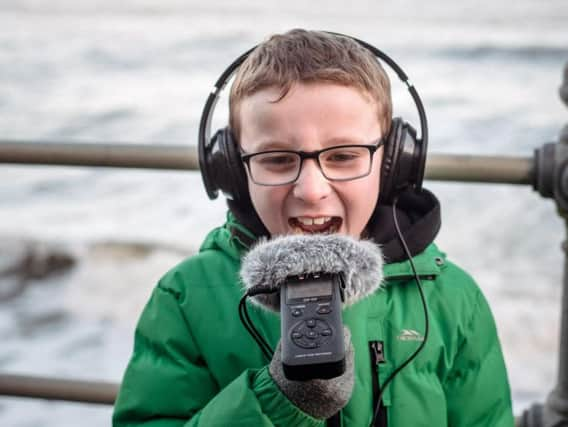Youngsters involved in sound idea to help environmental cause


The award-winning arts and environment charity also aims to develop their computer coding skills, through the ECOde project.
Invisible Dust works with artists and scientists to produce unique and exciting works of contemporary art.
Advertisement
Hide AdAdvertisement
Hide AdThe organisation uses the latest scientific thinking to explore our environment and highlight climate change.
Invisible Dust is committed to supporting communities to become ambassadors for climate change.
Understanding local environmental issues and learning how to talk about them is the beginning of this journey for the organisation’s audiences. ECOde aims to encourage its participants to start taking responsibility and to begin influencing change.
Supported by the Essential Life Skills Fund and in collaboration with North Yorkshire Libraries, ECOde project takes place at Scarborough Library, where participants learn computer coding, using programmes such as Scratch and Sonic Pi. Working with sound artist Rob Mackay, the ECOde group, aged between eight and 13, have been capturing sounds of the sea, bird song in parks and underwater noises using special hydrophones – microphones that record sound in water.
Advertisement
Hide AdAdvertisement
Hide Ad“The ECOde project is a great idea for getting the kids to become more aware of their environment and changes in it through coding and technology,” said Rob. “Working with sound and listening to the sounds of Scarborough has allowed the participants to gain a wider awareness of the environment of the area, simply by listening to the soundscape.
“We’ve gone out on two field recording trips where the participants have recorded contrasting sounds in different parts of Scarborough near to the library including waves on the shore, traffic, and underwater recordings in the duck pond in Valley Road.
“We’ve also recorded ‘hidden’ sounds around us such as sonifying electromagnetic interference.”
Once the sounds were collected the young people used the computers at Scarborough Library to layer the sounds to create their own individual soundscapes of Scarborough.
Advertisement
Hide AdAdvertisement
Hide AdThese soundscapes will be uploaded on to Google Maps to make a soundmap of the area.
Working with Scarborough Library, ECOde participants will be installing a solar-powered microphone and streambox to capture the sounds of Scarborough which will be added to a worldwide interactive soundmap. The Locus Sonus Project Soundmap showcases sounds from all over the world, from whale breeding grounds near Hawaii, the jungle in Costa Rica and the hum of traffic in Camberwell. The sounds are captured using microphones which are then shared live via an online interactive map.
The microphone on the roof of Scarborough Library will be live from Friday March 1 and noises familiar to the town, such as seagulls and easterly winds from the sea, will be shared in real-time on the online soundmap. The microphone and streambox will continue to capture sounds from 1st March so anyone from around the world can continue to listen in to the soundscape of Scarborough.
Dorcas Taylor, education curator at Invisible Dust said: “We hope that the sounds captured using the microphone and streambox will make people think about the environment and our impact on it.
Advertisement
Hide AdAdvertisement
Hide Ad“In addition to being part of a global project, the activity is helping the children learn valuable life skills.
“Working with a digital artist has enabled the young people to think more imaginatively about nature and become aware of the threats our natural world is facing. Using coding has allowed them to develop creative and problem-solving skills which are important to them as individuals and also for the planet, as we face the wider threat of climate change.”